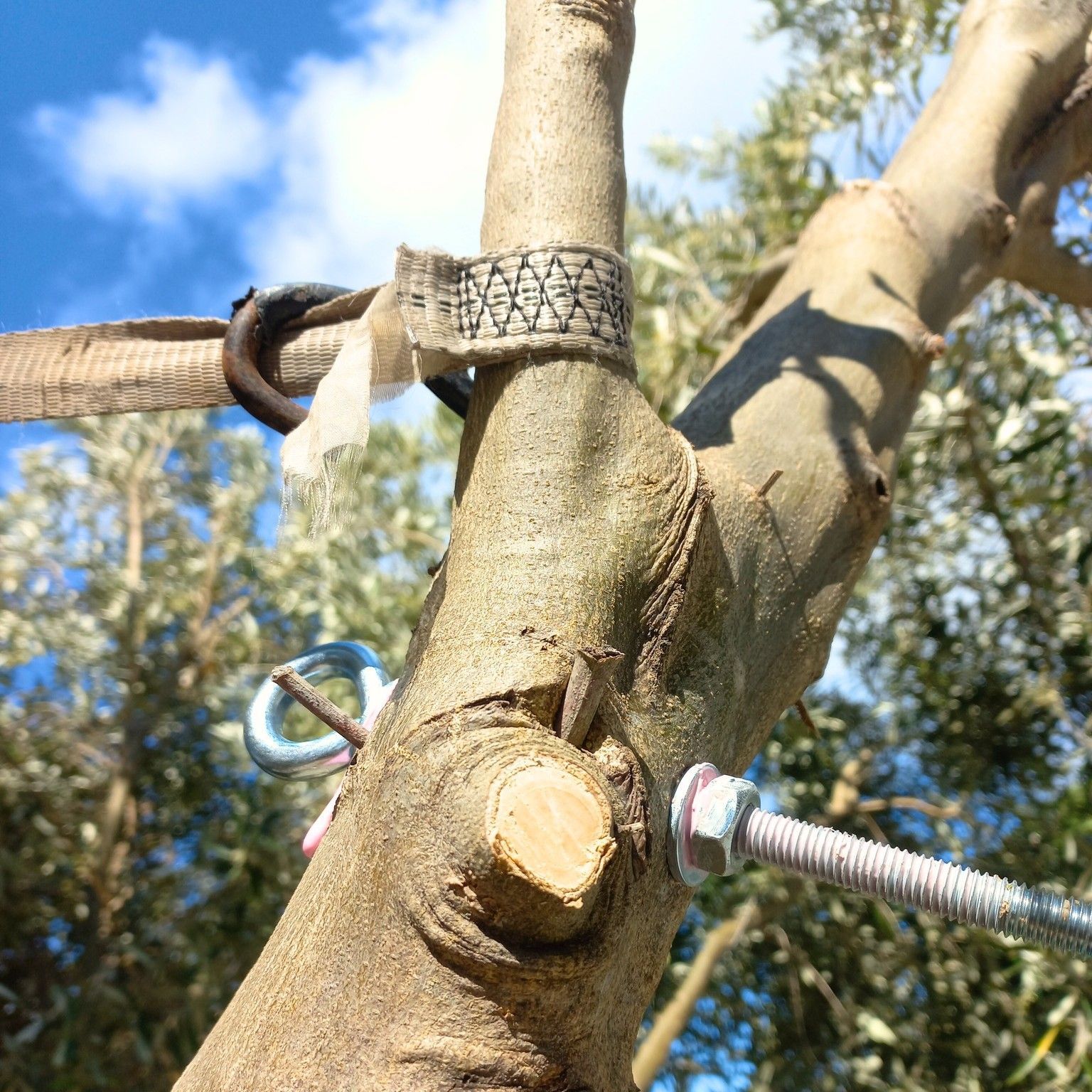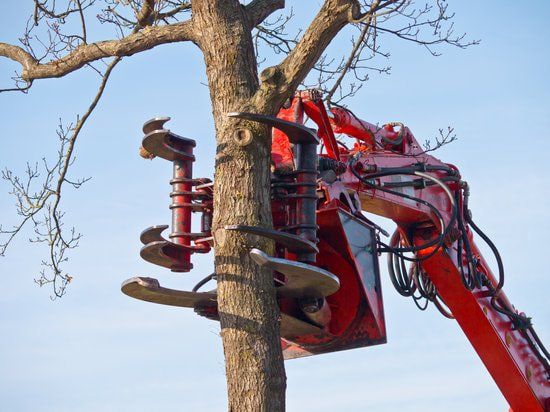Glasgow Trees
Tree Cabling and Tree Bracing Services
Tree Cabling and Tree Bracing Glasgow
At Glasgow Trees, we are excited to extend our expert tree care services to the vibrant city of Glasgow. Our tree cabling and tree bracing services are designed to support and stabilise trees with weak branches or poor structure, ensuring their health, longevity, and safety. Glasgow's unique urban and natural landscapes benefit immensely from well-maintained trees, and our team is dedicated to preserving the beauty and ecological value of the city's green spaces.
What Our Service Offers
Tree cabling and tree bracing are essential techniques in arboriculture designed to support and stabilise trees with weak branches or poor structure. These methods help trees withstand severe weather, heavy foliage, and other stress factors by providing additional strength. Cabling involves installing flexible steel cables between branches to reduce stress, while bracing uses rigid rods to strengthen weak branches or trunks.
Benefits
Enhanced Tree Stability and Longevity
Cabling and bracing provide crucial support to vulnerable trees, preventing them from collapsing under their weight or during strong winds. This not only preserves the tree but also maintains the aesthetic and ecological value of the landscape.
Prevention of Potential Hazards and Property Damage
Unstable trees pose significant risks, including falling branches that can damage property or injure people. Properly implemented cabling and bracing mitigate these risks, ensuring a safer environment for all.
Understanding Tree Structure
Anatomy of Trees
Understanding the basic anatomy of trees is crucial for identifying when and where support is needed. Trees consist of roots, a trunk, branches, and leaves. The roots anchor the tree and absorb water and nutrients. The trunk provides support and houses the vascular system that transports nutrients. Branches and leaves are involved in photosynthesis and growth.
- Common Structural Issues in Trees: Trees can develop structural problems due to various factors such as poor pruning, storm damage, or inherent genetic weaknesses. These issues include co-dominant stems, weak branch unions, and heavy limbs that can lead to potential failures.
Signs of Weak Tree Structure
Identifying weak tree structures early can prevent future problems. Some signs include:
- Cracks and Splits: Visible cracks or splits in the trunk or branches are clear indicators of structural weakness.
- Leaning Trees: Trees that lean significantly without a natural cause may need additional support to prevent them from falling.
Tree Cabling
What is Tree Cabling?
Tree cabling is a technique used to support and stabilise trees by installing flexible steel cables between branches. This method reduces the stress on weak branches, preventing them from breaking under their weight or during strong winds. Cabling is often used for trees with multiple trunks or heavy limbs that are at risk of splitting.
When to Use Tree Cabling
Scenarios Where Cabling is Beneficial
Tree cabling is beneficial for trees with weak branch unions, co-dominant stems, or heavy limbs. It is also useful for trees that have suffered storm damage or have inherent genetic weaknesses.
Case Studies of Successful Tree Cabling in Glasgow
There have been numerous successful tree cabling projects in Glasgow, where our arborists have used this technique to save and stabilise trees that were at risk of falling.
Process and Techniques
- Step-by-Step Process of Cabling a Tree: The process of cabling a tree involves several steps. First, the tree is inspected to identify the weak branches that need support. Next, flexible steel cables are installed between the branches using specialised tools and techniques. The cables are then adjusted to provide the necessary support without damaging the tree.
- Tools and Materials Used: The tools and materials used for tree cabling include flexible steel cables, cable grips, thimbles, and specialised installation tools. These materials are designed to provide the necessary support while minimising damage to the tree.
Tree Bracing
What is Tree Bracing?
Tree bracing is a technique used to support and stabilise trees by installing rigid rods between branches or through the trunk. This method strengthens weak branches or trunks, preventing them from splitting or breaking under stress. Bracing is often used for trees with significant structural weaknesses that cannot be addressed with cabling alone.
When to Use Tree Bracing
- Scenarios Where Bracing is Beneficial: Tree bracing is beneficial for trees with large limbs that are at risk of breaking, trunks with significant cracks or splits, and trees that have suffered severe storm damage.
- Case Studies of Successful Tree Bracing in Glasgow: There have been numerous successful tree bracing projects in Glasgow, where our professional arborists have implemented this method to save and stabilise trees that were at risk of collapsing and posing a danger to property or health and safety of the public.
Process and Techniques
- Step-by-Step Process of Bracing a Tree: The process of bracing a tree involves several steps. First, the tree is inspected to identify the weak branches or trunk sections that need support. Next, rigid rods are installed between the branches or through the trunk using specialised tools and techniques. The rods are then adjusted to provide the necessary support without damaging the tree.
- Tools and Materials Used: The tools and materials used for tree bracing include rigid rods, bolts, washers, and specialised installation tools. These materials are designed to provide the necessary support while minimising damage to the tree.
Choosing Between Cabling and Bracing
Assessment and Decision Making
Choosing between tree cabling and tree bracing requires a thorough assessment of the tree's condition. Arborists evaluate the tree's structure, identify the weak branches or trunk sections, and determine the best method for providing support. Factors to consider include the size and weight of the branches, the extent of the structural weaknesses, and the tree's overall health.
Examples of Assessments Done by Glasgow Trees: Our team has conducted numerous assessments to determine the best support methods for trees. In many cases, a combination of cabling and bracing is used to provide the necessary support.
Professional vs. DIY
Why Hire Our Professional Arborist at Glasgow Trees?
Hiring a professional arborist in Glasgow for tree cabling and bracing is essential to ensure the work is done correctly and safely. Our professional arborists at Glasgow Trees have received the correct training, and together with years of knowledge, experience, and tools needed to properly assess the tree's condition and install the necessary support systems.
Advantages of Professional Tree Care Services
Professional tree care services offer several advantages, including expert knowledge, access to specialised tools and materials, and the ability to provide comprehensive tree care.
Risks Associated with DIY Cabling and Bracing
DIY cabling and bracing can be risky, as improper installation can damage the tree or fail to provide adequate support. This can lead to further structural weaknesses and increased risk of tree failure.
Testimonials and Success Stories
Glasgow Trees has received numerous positive testimonials from satisfied clients who have benefited from their expert tree care services. Success stories include the stabilisation of historic trees and the prevention of potential hazards. Call our team to discuss your requirements and to arrange a free on-site consultation.
Cost and Maintenance
Cost Factors
The cost of tree cabling and bracing depends on several factors, including the size and complexity of the tree, the materials used, and the extent of the work required. Professional arborists can provide detailed estimates based on a thorough assessment of the tree's condition.
- Breakdown of Costs Involved in Tree Cabling and Bracing: Costs typically include the price of materials, labour, and any additional services such as tree inspections and maintenance.
- Factors Influencing the Cost: Factors that influence the cost include the size and weight of the branches, the extent of the structural weaknesses, and the tree's overall health.
Maintenance and Follow-up
Regular maintenance and follow-up are essential to ensure the continued effectiveness of tree cabling and bracing. Arborists recommend periodic inspections to check the condition of the cables and braces and make any necessary adjustments.
- Importance of Regular Inspections: Regular inspections help identify any issues with the cabling and bracing systems and ensure they are providing the necessary support.
- Long-term Maintenance Tips for Cabled and Braced Trees: Long-term maintenance tips include keeping an eye on the tree's growth, trimming any overgrown branches, and addressing any new structural issues as they arise.
Environmental and Community Impact
Environmental Benefits
Tree cabling and bracing contribute to the health and stability of trees, which in turn benefits the environment. Healthy, stable trees provide numerous ecological benefits, including improved air quality, reduced soil erosion, and enhanced wildlife habitats.

How Cabling and Bracing Contribute to Tree Health and the Environment
By preventing tree failures, cabling and bracing help maintain the health and longevity of trees, allowing them to continue providing environmental benefits.

Community Safety
Properly supported trees reduce the risk of accidents and injuries caused by falling branches or tree collapses, promoting a safer community environment.
For Free Quotation and Expert Advice
Local Regulations and Guidelines
Glasgow City Council Guidelines
Local regulations and guidelines play a crucial role in tree care and maintenance in Glasgow. Arborists must adhere to these regulations to ensure their work is compliant and safe.

Overview of Local Regulations Regarding Tree Care
Local regulations may include guidelines on tree pruning, removal, and the installation of support systems.

Compliance and Best Practices
Glasgow Trees follows all local regulations and best practices to ensure their work is safe, effective, and environmentally responsible.
Call To Arrange A FREE Consultation And Fast Quote
Tree cabling and bracing are essential techniques for supporting and stabilising trees with weak branches or poor structure. These methods help trees withstand severe weather, heavy foliage, and other stress factors, preventing structural failures and promoting tree health and longevity.
If you have trees that may benefit from cabling or bracing, contact Glasgow Trees for a consultation. Their team of experienced arborists can assess your trees and recommend the best support methods to ensure their health and stability. Don't wait until it's too late – take proactive steps to protect your trees and your property today.
For Free Quotation and Expert Advice
Frequently Asked Questions About Tree Felling
How long do tree cabling and bracing systems last?
The longevity of tree cabling and bracing systems can vary depending on several factors, including the type of materials used, the condition of the tree, and environmental conditions. Generally, these support systems can last anywhere from 7 to 10 years. Regular inspections by our professional arborist at Glasgow Trees is crucial to ensure the systems remain effective and to make any necessary adjustments or replacements.
Expert Insight from Glasgow Trees: "We recommend having your cabling and bracing systems inspected every 2 to 3 years. This helps to ensure they continue to provide adequate support as the tree grows and conditions change. In some cases, we may need to adjust or replace the systems to maintain their effectiveness."
Do tree cabling and bracing systems harm the tree?
When installed correctly by our professional team, tree cabling and bracing systems should not harm the tree. These systems are designed to be low invasive and to support the tree without interfering with its natural growth processes. However, improper installation or neglecting regular maintenance can potentially cause harm.
Expert Insight from Glasgow Trees: "Our team at Glasgow Trees uses the latest techniques and best practices to ensure that cabling and bracing systems are installed in a way that minimises any potential harm to the tree. We also provide ongoing maintenance services to monitor the health of the tree and the integrity of the support systems."
How much do tree cabling and bracing systems cost?
The cost of tree cabling and bracing can vary based on several factors, including the size and complexity of the tree, the type of support system required, and the specific conditions of the site. On average, homeowners can expect to pay between £300 and £800 per tree for professional cabling and bracing services.
Expert Insight from Glasgow Trees: "Every tree and situation is unique, so we provide customised quotes based on a thorough assessment of your trees. Factors that influence the cost include the height and size of the tree, the number of cables or braces needed, and the accessibility of the site. Our goal is to provide effective solutions that fit within your budget."
When should I consider tree cabling and bracing for my trees?
You should consider tree cabling and bracing if you notice signs of structural weakness, such as cracks, splits, or heavy, leaning branches. Trees with multiple trunks, weak branch unions, or those that have experienced storm damage are also good candidates for these support systems.
Expert Insight from Glasgow Trees: "If you're unsure whether your tree needs cabling or bracing, our team can conduct a comprehensive inspection to assess the tree's condition. We'll provide expert recommendations based on our findings to ensure the best course of action for maintaining the health and safety of your trees."
Can I install tree cabling and bracing systems myself?
While it may be tempting to install cabling and bracing systems yourself, it is highly recommended to hire a professional arborist. Improper installation can lead to inadequate support and potential harm to the tree. Professional arborists have the training, experience, and specialised equipment needed to perform the job safely and effectively.
Expert Insight from Glasgow Trees: "Tree cabling and bracing require precise techniques and an understanding of tree biology. our certified arborists have the expertise to ensure that support systems are installed correctly, providing the necessary strength without compromising the tree's health. DIY attempts often lack the precision and knowledge required, which can lead to suboptimal results."
By addressing these common questions, we aim to provide you with a clear understanding of the importance and benefits of tree cabling and bracing. If you have any further questions or need assistance, please don't hesitate to contact the expert team at Glasgow Trees. We're here to help you maintain the health and safety of your trees in Glasgow.

CONTACT
Glasgow Trees Clyde Offices 2nd Floor
48 West George Street
Glasgow G2 1BP, Scotland, UK.
Email: glasgowtrees@gmail.com
Tel:
0141-483-7485
QUICK LINKS
QUICK LINKS
Copyright © 2024 Glasgow Trees



